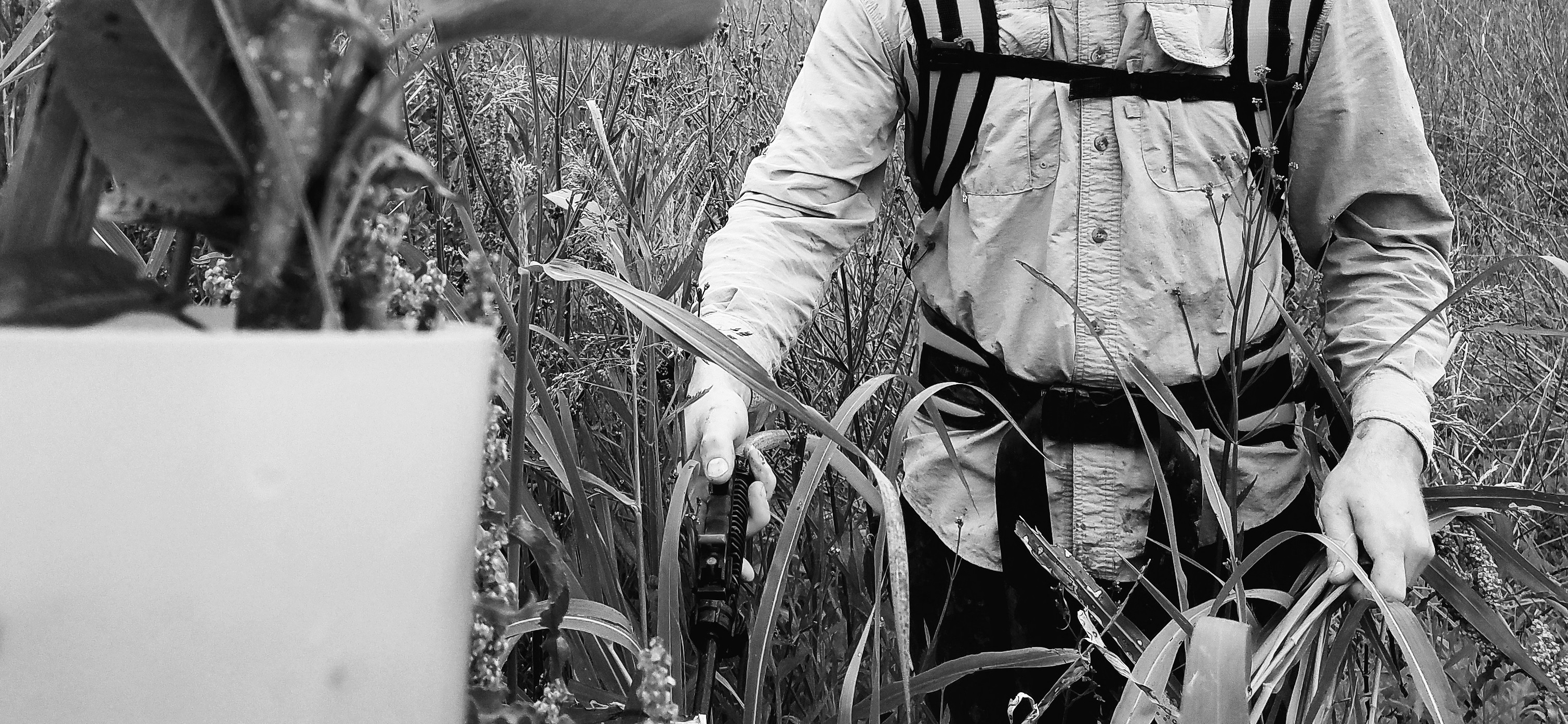Controlling Weed Competition
Controlling weed competition around newly planted trees is the single most beneficial action you can perform to ensure you reap the fruits, pun intended, of your labor. Seedlings are most at risk during the first two years after being planted. Efforts to minimize or eliminate vegetative growth should be made for at least two years to help reinforce fast, healthy establishment of your trees. When vegetation is not controlled, established and new annual and perennial forbs and grasses, as well as, undesirable tree species will compete with and often outcompete a transplanted seedling. When vegetation is eliminated in the immediate proximity, seedlings do not have to compete for the available water, nutrients, and sunlight. Controlling weed competition can be done naturally, mechanically, or chemically. A lack of competition will result in a higher rate of survival, healthier plants, faster growth, and earlier mast production.
Why is controlling weed competition so important? Every cubic inch of soil has a finite amount of nutrients and water available to be absorbed by a plants root system. Imagine having a dozen goldfish in a fish bowl and only having enough food for one fish a day. There will be major competition over that food and chances are some of those fish will not make it. The ones that do survive will not be healthy nor grow to reach their potential due to a lack of nourishment and crowding. Now imagine that fish bowl but with one fish. This fish will have all the nourishment it needs and room to flourish and grow to its potential. The same principle applies to your newly planted tree and competing weeds. Eliminating competition is vital to survival.
There are two major obstacles your seedlings must overcome immediately after planting, 1) transplant shock and 2) weed competition:
- Transplant shock is stress caused to a seedling from being moved and having to acclimate to a new growing location. All transplanted seedlings experience transplant shock to some degree. The intensity of transplant shock can depend on a number of factors including: container grown vs. bare root specimen, age and size, health, species, and planting site quality. Generally speaking, the bigger the tree the more intense and the longer the duration the effects of transplant shock will be. The length of time roots are exposed to air and the way your tree is handled and planted are the only controllable factors for reducing transplant shock. In other words, outside of proper timing, handling and planting there is not much you can do for your trees to avoid transplant shock but you can control weed competition. Controlling weed competition decreases stress in a new planting, enabling it to more efficiently cope with transplant shock.
- Controlling or eliminating weed competition can be accomplished in a number of ways. Mulching will help minimize weeds, retain moisture in the soil, and insulate the root system from extreme temperatures. Weed fabric can also be used as a barrier to deter weeds around newly planted trees. By hoeing or using a spade to turn the top soil you can mechanically control weed competition. Mechanical application is effective and cheap but it is very time consuming. Mulching, weed fabrics, and mechanical application are all viable forms of controlling weed competition.
The most effective and time efficient application for controlling weed competition is the use of chemicals. There is a bounty of consumer herbicides on the market today that are up to the task. B&P Family Farms prefers the use of glyphosate. Glyphosate is a non-selective herbicide. What this means is: Do not spray it on anything you do not want to kill! Glyphosate has a relatively short half-life and is considered non soil active. This means it breaks down easily and has little to no collateral effect on the soil and surrounding vegetation. Therefore, we have found, glyphosate is relatively safe. This herbicide is only effective when sprayed on the leaves of actively growing plants.
B&P Family Farms recommends chemically treating weed competition around newly planted trees three times a year for the first two years. Spray 3’-4’ around trees shortly after spring green up and twice more 45 days after the previous application. If three applications are not feasible due to logistic constraints, it is better to spray herbicide earlier on younger weeds than later on older weeds. Always take the proper precautions when handling chemicals. Where skin and eye protection and READ the labels to ensure not only proper application but more importantly your safety.
Controlling weed competition can be quick, fairly labor free, and easy. It is as simple as an ATV ride with a sprayer. Eliminating or controlling weed competition helps your trees establish faster, which leads to a healthier tree, quicker growth, and earlier mast production. In a nutshell (See what I did there!) controlling weeds is the difference in achieving your goals of providing quality food and habitat to wildlife sooner than later vs. waiting a long time for production and possibly being disappointed in your results.
